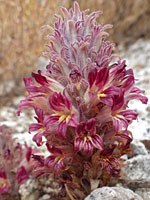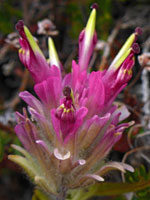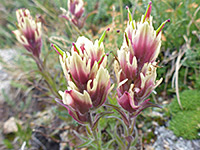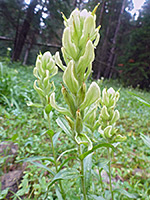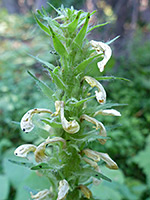The US is home to 292 species in the orobanchaceae (broomrape) family, found in all areas of the country but least common in the Great Plains. The vast majority are parasites, using the roots of other plants for all or part of their sustenance. Some lack chlorophyll.
Flowers have bilateral symmetry, and are borne singly or in clusters, usually along an unbranched stem. Flowers are formed of between two and five sepals, fused to form a tubular calyx, and five partly fused petals, grouped into a two-lobed upper lip and a three-lobed lower lip. The flower center contains four stamens, two longer than the others. Some species have a fifth, infertile stamen. Some genera including the widespread castilleja were recently transferred from the scrophulariaceae family.
All Contents © Copyright The American Southwest | Comments and Questions | Contribute | Affiliate Marketing Disclosure | Site Map

